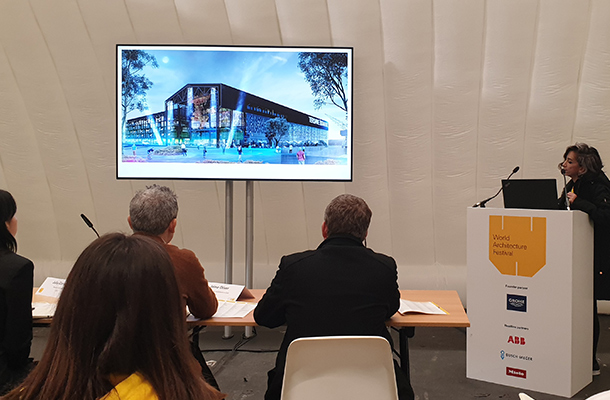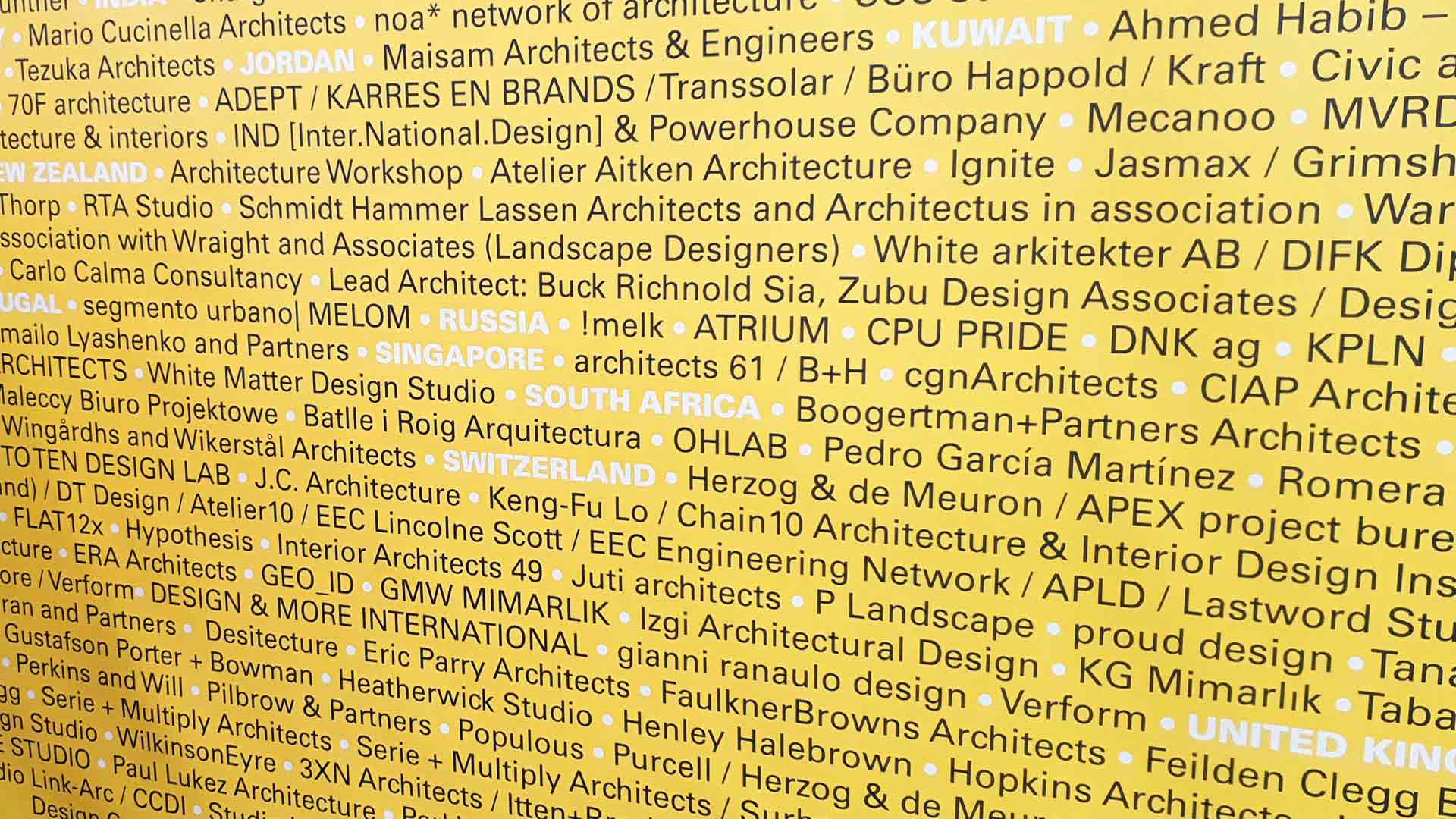Casting light on Amsterdam
At the beginning of December, I packed my bags, for a somewhat chillier climate, and headed to Amsterdam for the World Architecture Festival (WAF) – an annual three-day event where international architects present their schemes to a panel of three judges (other architects), in a bid to win their category. The finalists are then shortlisted and judged by the well-known “Super Jury”.
Held in one of the spacious halls of the RAI Amsterdam, 17 pop-up inflatable “crit” rooms around the peripheral were used to house the presentations, while the centre of the hall was dedicated to the show’s sponsors – only one of which was a lighting manufacturer.
There were multiple categories presented during the first two days of the festival, varying from retail to commercial, workplace to healthcare, leisure to cultural. Both completed and future schemes were separated across categories, and the architects had ten minutes to pitch their projects. They were then given a further ten minutes of probing and questions from the panel judges; think of it as a Dragons’ Den for architecture. The format was very fast paced and intense, as the architects conveyed the story of their beloved schemes (some of which have been years in the making) in the strictly monitored time limit.

Yet, the beauty of presenting to fellow peers is that you can be somewhat more technical in your explanations of the more intricate details, which is appreciated by the jury but would be perhaps lost on a client. The days ran from 10am until 5pm with minimal coffee breaks and an hour for lunch, so it was intensive in terms of the number of presentations one would get exposure to. European projects were of course well represented, with China and Southeast Asia coming a close second. I was surprised not to see more projects entered from the Middle East region.
As the festival progressed, it dawned on me that from the numerous presentations I attended, little or no mention had been made to architectural lighting (or at least at the ones I had seen). Obviously, I’m biased to our industry, and I appreciate that ten minutes is a very short period of time and that all aspects can’t be covered. I guess I was expecting a few presentations to give some notion to our craft, which brings life to projects during the hours of darkness. Occasionally there was a mention of LED lighting and its energy-efficient qualities, but that felt very 2005 and we’ve moved on from that. It’s very hard to imagine that architects don’t value lighting within their schemes, so perhaps it comes down to us as an industry not sharing our knowledge enough with the wider design community.
Unfortunately, we deal in the intangible substance of light; if we do our job well, we aren’t noticed. When the interiors or the facades are beautifully lit, they are the heroes and rightfully so, but walk into a space that is badly lit and you know about it immediately.
The only project presentation that I witnessed with any lighting dialogue was the Qatar National Museum Gift Shop and that was with negative connotations. This project sits within the architectural marvel of Jean Nouvel’s National Museum of Qatar and was designed by Koichi Takada Architects from Australia. The scheme is a beautifully conceived piece of interior architecture, with a complex timber frame dawning the walls of the gift shop drawing inspiration from a Qatari cave and replicating the cavernous voids. There are over 50,000 individual timber slats that were handcrafted and pieced together on site like a giant 3D jigsaw puzzle. It’s simply stunning.
The judges, however, were critical of the lighting and rightfully so. The lighting to the walls and ceiling is not integrated and the eye is drawn to the large, black projectors that adorn the timber framework, which detracts from the beauty of the space. With just a bit of careful planning the lighting could have been integrated into the design in a way that concealed the unsightly equipment from view, while still delivering the same effect.
I spoke with the architect after their presentation and they confirmed that there was no lighting consultant on the project and that the lighting “design” was produced with the supplier. This is a prime example of where our added value lies in a project; considering these details would have escalated the project from impressive to exceptional.
So, my takeaway from a few days at WAF? We, as an industry, need to be better at educating architects, interior designers and landscape consultants on the added value of independent lighting design (on that note, here’s a piece Paul Nulty wrote about our added value in the retail sector). This can only come through continually talking to people and attending events, such as WAF, waving our lighting banner. (Tighter regulation on becoming an independent lighting designer also needs to occur, but that’s a whole other can of worms…)
Hopefully next year the organisers of WAF will consider a small prize for architectural lighting design where we can showcase our designs to a wider audience… watch this space!


